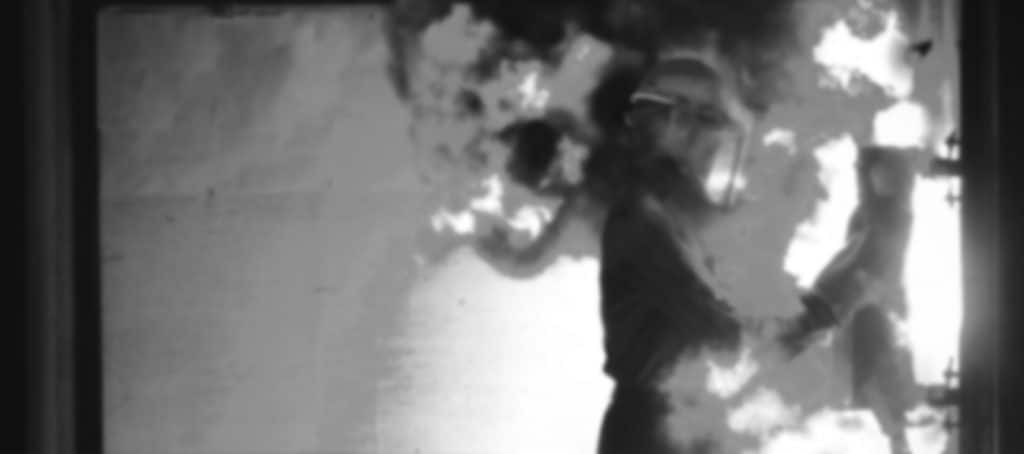Is One Rating Better Than the Other?
The question often arises as to whether an Arc Thermal Performance Value (ATPV) or an Energy Breakopen Threshold (EBT) is better protection in a garment system.
When ASTM F1959/F1959M – 12 (The Standard Test Method for Determining the Arc Rating of Materials for Clothing) was in development, we quickly recognized that some materials allow skin burn prediction to be reached before they “broke open” and others would not. Initially these became two ratings. One was called an ATPV and the other was an EBT.
Initially, one was marketed as “better” than the other because the materials tested did not exhibit the “breakopen” phenomena. This finding was erroneous and later determined every fiber type can breakopen before its burn prediction level was reached. This happened most commonly in knits vs. wovens.
Each of these constructions and all fibers have their advantages and disadvantages. The committee decided to rename the term Arc Rating.
After much consideration, the committee decided to leave the term EBT and ATPV as a subscript, or an addendum, to the term Arc Rating. Both are a 50% probability of the behavior at which the material compared to a burn model can give a second degree burn.
The EBT has not exhibited a second degree burn on the sensors in most cases because the material has a one inch crack or a ½-square-inch hole which is not directly over the sensor. Theoretically if this had happened over the sensor there would have been a burn predicted so we cut off the rating there.
Both arc ratings are expressed in calorie/cm². The lowest is always reported. Each material receives an EBT or an ATPV but both can be reported. Only the lowest can be used as the Arc Rating on the clothing according to the ASTM F1506 specification.
ASTM Standards Definitions:
- ATPV (Arc Thermal Performance Value) is the incident energy on a material that results in a 50% probability that sufficient heat transfer through the specimen is predicted to cause the onset of second-degree burn injury based on the Stoll Curve, cal/cm².
- Energy Breakopen Threshold (EBT) is the incident energy on a material that results in a 50% probability of breakopen. Breakopen is defined as any open area at least 1.6 cm² (0.5 in.²)
ATPV and EBT are both evaluated in the same test, but the first point to be reached is the reported arc rating. IF the material has more thermal insulative value than tensile strength to heat, then it breaks open first. If the opposite is true, it will allow burns BEFORE it breaks open.
If an EBT value is determined and it is found to be equal to or below a determined ATPV, then the EBT value shall be reported as the arc rating value and noted as Arc Rating (EBT).
If an EBT value is determined and it is found to be above a determined ATPV, then the ATPV result shall be reported as the Arc Rating (ATPV) of the tested specimen.
Here is an additional way to look at these numbers:
Arc Rating Can be of Two Types
- ATPV: This is 50% probability of second degree burn in the 8kA arc test on a flat panel.
- EBT: This is the 50% probability of a one inch crack in the material.
Neither is better than the other. Basically, EBT fabrics are typically more insulative than they are strong, and ATPV materials are stronger than they are insulative. Usually, EBT indicates the garment is a knit and is more comfortable but essentially no less protective to the user.
See the ArcWear post on this topic for more information.
updated 3/02/2022


Hugh
The industry talks about PPE categories 1 through 4 (or 40 cal/cm2). But we know there are PPE rated to 106 cal/cm2. What categories are these?
Also category 0 is no longer used. Why?
The industry talks about PPE categories 1 through 4 (or 40 cal/cm2). But we know there are PPE rated to 106 cal/cm2. What categories are these?
Also category 0 is no longer used. Why?
Categories work a little differently. IEEE 1584 in 2002 added to the confusion.
The clothing STARTS at minimum categories
PPE CAT 1 MIN 4 cal
PPE CAT 2 MIN 8 cal
PPE CAT 3 MIN 25 cal
PPE CAT 4 MIN 40 cal
So 106 cal is PPE CAT 4 BUT a high CAT 4
CAT 0 was removed for several reasons. 1. It was cotton clothing so not truly PPE. 2. It still allowed ignition and most on the committee felt it should have never been allowed.
Cotton is still ALLOWED UNDER PPE so CAT 0 is still alive but it is covered which makes it safer.
So how would I use any arc flash? if i am working on 11000 volts or on 5000 volts or below how would I know which Cal suit or gloves if have to use?
There are two ways.
1. Use a standard table such as in OSHA 1910.269, NESC (ANSI C-2) or NFPA 70E.
2. Do engineering calculations using IEEE 1584 (usually in a software like SKM, EasyPower, ETAP, etc.) or ArcPro 3.0.
This is the only way to know. Typically these would require 8-65 cal. Depends on the fault current, electrode configuration, containment and clearing time.
Thank you for this info. To fix an appliance I had to try welding at my friend’s shop for the first time and wish I had know this sooner. Cheers.
Yes, understanding the difference in FR and Arc-rated PPE is critical knowledge. They serve entirely different functions.